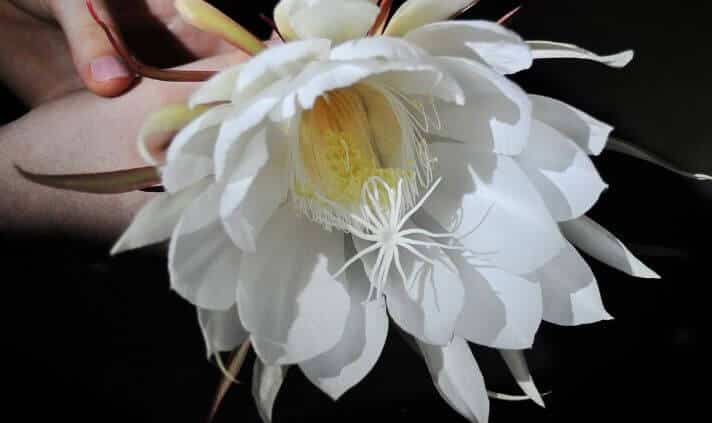Last Updated on September 9, 2023 by a Friendly Gardener
The Christ in the manger plant is a vining plant that belongs to the Epiphyllum family. This plant is actually a cactus that grows several thick stems that are dark green in color and have some ridges and spines along their length.
This plant is called Christ in the manger mainly because the plant blooms forth a white and stunning flower at nighttime, although this occurrence is remarkably rare and usually only takes place over a single night in the blooming season.
Also referred to as the night-blooming cereus, this cactus plant can add an interesting presence to your collection of plants. You can obtain some Christ in the manger plant information below.
Propagating Methods
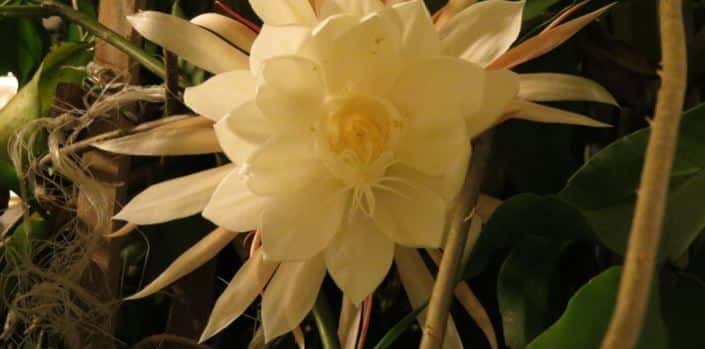
The easiest way in which you can propagate this plant is by making use of small cuttings from the stems of this plant. Although there might be places (online or offline) where you might be able to obtain the seeds of this plant, this is an unlikely possibility on a general basis.
It is also much harder to grow this plant using seeds, which is why cuttings can offer a solid and reliable method of growth.
If you are confused about how you can carry this process out, you can take a look at the steps described below.
- Use scissors or shears to cut off a part of the stem of a mature plant. Remember to wear gloves during this process and make sure each cutting is around 5-6 inches in size.
- If there are any leaves on the cuttings, pluck them out and lightly clean up the stems.
- You might require a rooting hormone that can allow the stems to develop roots more efficiently. Simply dip one end of the stems into this substance.
- Take a small pot filled with soil and insert the stem cutting into it without covering it up entirely.
- You can now situate your plant container in a part of your house, such as the balcony or window or any other room or space. However, keep the plant away from harsh light as this can damage its growth.
- Lightly and infrequently water the cutting and allow it a few weeks to develop roots and a stem.
- If your pot is large enough, you can keep growing the plant inside it. If not, you might need to repot the plant in a slightly larger container.
Christ in the Manger Plant Care
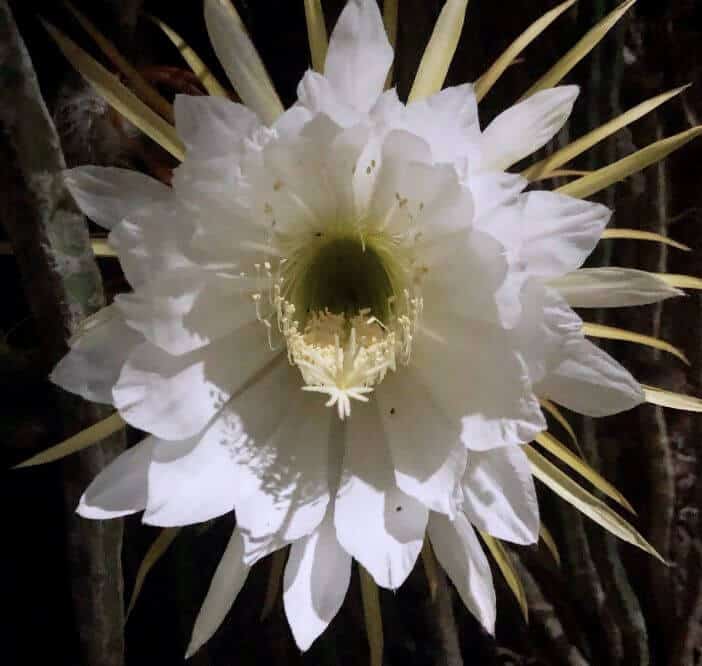
The Christ in the manger plant has several distinct requirements when it comes to its care and maintenance. However, these are not too difficult to follow and stick to, especially once you get accustomed to the process and schedule a bit more.
The initial few weeks of caring for this plant might need some alterations based on how the plant is reacting, but the general requirements are as follows.
Watering
You should water this plant regularly but not too frequently. Given the large thick leaves of this plant, in addition to the cylindrical stems, water storage is already a feature of this plant, which is why it can help to first check the soil condition before watering.
If the upper layers are dry, you can lightly water the plant again.
Light Conditions

You do not want to overdo it with the amount of sunlight you let the plant receive. As much as the plant loves natural and bright sunlight, it does not prefer directly falling under this light, so make sure you find a location where there is filtered light along with enough shade for the afternoons.
Temperature
The temperature around this plant should remain relatively consistent. Keeping this temperature over 40℉ is key to ensure that it grows well, with anything below this likely to freeze and shrivel the plant.
If you live in hot climates, it can help to grow the plant indoors in slightly cooler temperatures.
Fertilizing
This plant can get a nice stimulus if you make use of a completely balanced and highly diluted fertilizer. You should use this kind of fertilizer in the months of spring and summer, sticking to a small quantity given once every month or two.
Once the temperature drops a bit after summer, you should completely stop adding fertilizer to the soil.
Soil
You can use a cactus mix or even regular potting soil to grow this plant. Mix in some sand, perlite, moss, compost, and dried-up leaves to make the soil coarser and richer. This can also make it better draining.
The soil pH should also be closer to neutral or mildly acidic.
Transplanting
The growth rate of this plant tends to be quite rapid, so you might need to find a larger pot or container for your plant once it reaches a certain height. If you find that the growth rate has slowed or you see roots coming out of your container’s drainage hole, this can be a sign that your plant needs transplanting.
Flowering
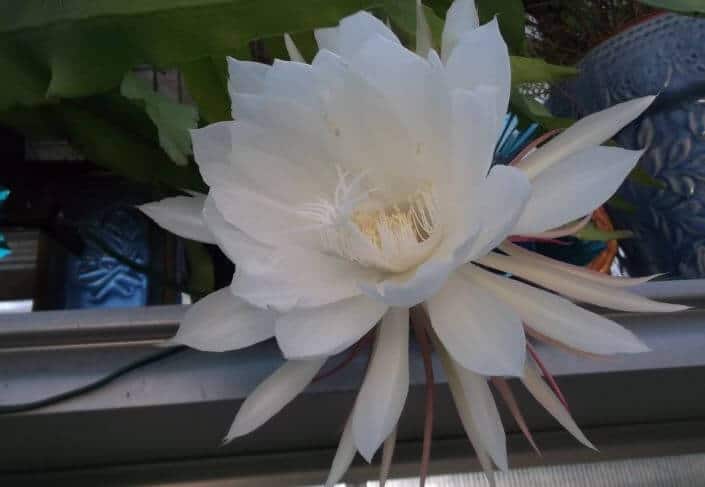
The flowers of this plant are its highlight. Large, white, and layered, these flowers earn this plant its name, especially since they are so rare and distinct. You can encourage such blooms with the right conditions, but you might have to watch carefully for these blooms since they will only bless you for a single night.
Pruning
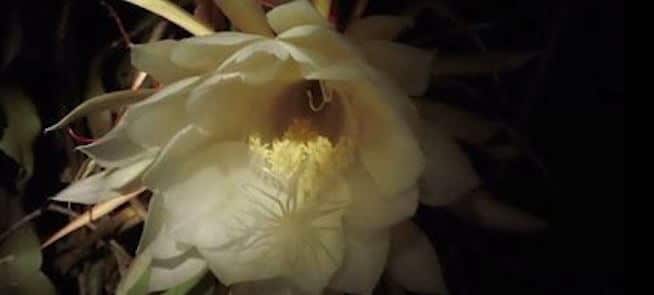
Unlike many cacti, this plant develops rich and big leaves that usually grow as vines. Given that vines can become quite leggy, it can help to prune the older leaves at the end of winter or the onset of spring.
Restricting Pests
Pests typically stay away from this plant, but if you notice any around your plant, you should make use of mild soap and warm water to get rid of them. Insecticides and some natural oils can sometimes also help.
Final Thoughts
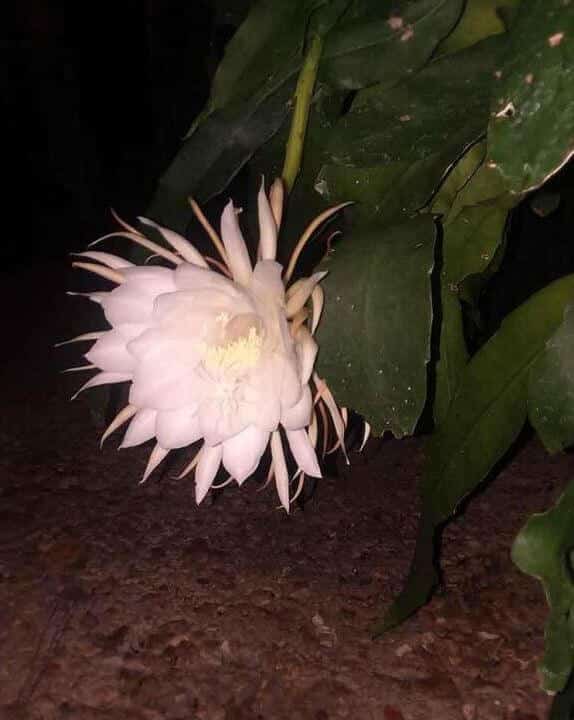
Christ in the manger or the night-blooming cereus is a unique plant due to its sporadic and beautiful nighttime flowering. Its large leaves and thick stems can provide additional beauty to your space as long as you take proper care of this plant.

